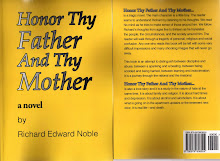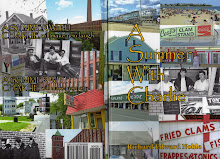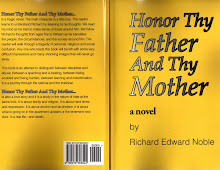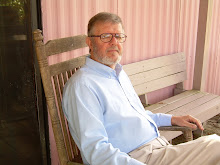
Ludlow Massacre 1913 - 1914 Colorado
By Richard E. Noble
One would probably not stumble onto information about the Ludlow Massacre in a traditional history book or a general American history book. But it was famous enough to have a song written about it by Woody Guthrie.
The Ludlow Massacre
It was early springtime when the strike was on,
They drove us miners out of doors,
Out from the houses that the company owned,
We moved into tents up at old Ludlow,
I was worried bad about my children,
Soldiers guarding the railroad bridge,
Every once in a while a bullet would fly,
Kick of gravel under my feet.
We were so afraid you’d kill our children,
We dug us a cave that was seven feet deep,
Carried our young ones and pregnant women
Down inside the cave to sleep.
That very night you soldiers waited,
Til all us miners were asleep,
You snuck around our little tent town,
Soaked our tents with your kerosene.
You struck a match and in the blaze that started,
You pulled the triggers of your Gatling guns,
I made a run for the children but the fire wall stopped me,
13 children died from your guns.
I carried my blanket to a wire fence corner,
Watched the fire til the blaze died down,
I helped some people drag their belongings,
While your bullets killed us all around
I will never forget the look on the faces,
of the men and women that awful day,
When we stood around to preach their funerals,
And lay the corpses of the dead away,
We told the Colorado Governor to phone the President,
Tell him call off his national guard,
But the National Guard belonged to the Governor,
So he didn’t try so very hard.
Our women from Trinidad they hauled some potatoes,
Up to Walsenburg in a little cart,
They sold their potatoes and brought some guns back,
And they put a gun in every hand.
The state soldiers jumped us at the wire fence corners,
They did not know that we had these guns,
And the Red-neck miners mowed down them troopers,
You should have seen them poor boys run,
We took some cement and walled the cave up,
Where you killed those 13 children inside,
I said, “God bless the Mine Workers Union,”
And then I hung my head and cried.
“In the interminable war between capital and labor, the bloodiest battlefield may have been the mining towns of Colorado … Since 1894 martial law had been declared ten times in Colorado as well as several times in Idaho. After the brutally suppressed coal mine strikes in 1903 the operators had replaced the American, Welsh and Irish miners with presumably more tractable immigrants: Finns, Mexicans, Poles, Italians, and Japanese ... some of them thought Rockefeller was president of the United States. A miner of greater than average experience and sophistication described the camp superintendents as ‘a most uncouth, ignorant, immoral, and in many instances, the most brutal set of men that we have ever met … blasphemous bullies.”(1)
In September, 1903 local delegates voted to strike unless their demands were granted. These included an eight hour day, semi-monthly pay, the abolition of payment in company scrip, a 2,000 pound ton instead of a 2,400; and better ventilation in the mines. Only the demand for an eight hour day was not required by statutes; in fact, in the main, the miners were merely calling for the enforcement of the state laws.
“When the Colorado Fuel and Iron Company and the Victor Fuel Company refused to negotiate, the miners struck on Nov. 9. Immediately striker’s families were evicted from the company houses; union organizers were arrested; the strike breakers were rushed in, protected by company guards and state troops. After the company guards had killed and wounded several strikers, many of the strikers acquired weapons in order to defend themselves. Finally military rule was established financed by coal companies, railroads, merchants and property owners. Military arrests followed, and between four and five hundred striking miners were rounded up by the state soldiers and the armed guards and loaded into two trains. One was dispatched to Kansas and the other to New Mexico. The men were unloaded in the prairies and warned to keep away from Colorado. This massive state intervention on the side of the coal companies broke the strike, and in October, 1904, it was called off.” (2)
The 1903 strike was put down brutally in this Colorado labor/management war zone. The 1903 strike was lost and no changes had been made. By the year 1913 the only real change was that many of the miners now employed were strikebreakers who had been imported in 1903.
John D. Rockefeller Jr. was the owner of the Colorado Fuel and Iron Company. His office was in New York and he admitted to only a cursory knowledge of the operation and supposedly left the management of the mine to his operators and managers in Colorado. Most history books imply that Mr. Rockefeller was more than aware of what was going on but presented naiveté and detachment as a rouse to garner public support and sympathy and avoid legal and possible criminal responsibility. When he did finally speak out he made the claim that he was fighting for the rights of workingmen. He didn’t want to deprive the American working man of his right to choose whom he wanted to work for. Rockefeller was fighting for freedom, justice and the American way - security of private property and capitalist investment.
Once again the United Mine Workers formulated a strike. “They were supported by a veteran labor organizer, 83 year old Mother Jones, just released from jail for having helped the West Virginia coal miners in their fight against company feudalism ... The convention voted unanimously to strike on September 23 for union recognition, a ten percent increase in wage scales; the eight hour day; pay for ‘dead work’ (timbering, removing fall, handling impurities, etc.); checkweighmen in all mines to be elected by the miners; five choice of stores, boarding houses, and doctors; enforcement of the Colorado mining laws; and abolition of the notorious guard system which has(d) prevailed in the mining camps of Colorado for many years ... As in the case of the 1903 strike, nearly all the demands were already on the statute books of Colorado but had been ignored by the company ... The UMW leased land just outside the company property, brought in tents from West Virginia, and set up tent colonies in Ludlow, Suffield, Forbes, Berwind, Starkville, La Veta and seven other sites.” (3)
The situation only got worse and more and more lopsided.
“The miners wives and children tried to keep warm that winter in temperatures as low as forty to fifty degrees below zero … The Baldwin Felts agency brought in a special automobile, with a Gatling gun mounted on top . . . The Death Special . . . On October 5, the operators shipped four machine guns into the strike zone. The miners threw up breastworks and dug pits under the tents to protect the women and children ... Governor Ammons ordered the National Guard into the strike zone ... The thousand or so soldiers under Adjutant-General Chase’s command were literally strikebreaking agents of the Colorado Fuel and Iron Company. The company paid their salaries and the soldiers were quartered in company buildings and furnished with supplies by the company ... In searching the miners tents for guns, the militiamen robbed them and even raped some of the woman. Strikers were thrown into jail without the slightest provocation and were held without any opportunity to prove their innocence. Mother Jones was arrested and held incommunicado for twenty days, with two armed sentries posted outside her prison door.”
Even by the standards of many in the Federal government the state of Colorado had gone mad.
“Mediators sent by President Wilson to try to negotiate a settlement, reported that the mine operators became ‘wild men’ when the strike was discussed . . . ‘They fly into a rage, curse the federal government, and froth at the mouth.’ One of the mediators, dismayed at the intransigent spirit, wrote that ‘the state (Colorado) ought to be disenfranchised.’ The United Mine Workers considered calling out all the mine workers in the country.” (4)
“George P. West who investigated the strike for the U.S. Commission on Industrial Relations noted that ‘the Colorado National Guard no longer offered a pretense of fairness or partiality, and its units in the field had degenerated into a force of professional gunmen and adventurers who were economically dependent on and subservient to the will of the coal operators.”
Armed battles ensued and a dozen or so strikers were killed.
Lieutenant Kenneth E. Linderfelt, known to the strikers as Jesus Christ because of claims of that nature made by Linderfelt “On the morning of April 20 ... approached the camp at Ludlow and demanded that Louis Tikas (strike leader and union organizer) release an unidentified person ... Tikas assured him (Linderfelt) that no such person could be found ... Then, exactly at 9 a.m., the dull clatter of a machine-gun began and the first bullets ripped through the canvas of the tents. The clatter became a deafening roar as more machine-guns went into action. The high powered rifles of the militia joined in and poured a hail of explosive bullets into the tents. Five strikers and a 10-year-old boy were killed ... men dashed from tent to tent ... many of the women had been undressed when the firing began ... Fifty of the women were pregnant and one of the mothers gave birth to a baby as she fled from the colony. Some of the women managed to run off into the hills and hide in nearby ranch houses. Other crawled with their children into the dark pits and caves which had been dug under a few of the tents ... As Tikas was attempting to help a woman and two children escape from one of the cellars, he was captured by the troops ... Surrounded by his men, the burly Lieutenant (Linderfelt) greeted his captive with; “Oh it’s you, you goddamn redneck.” Then as Tikas replied, the lieutenant seized his army rifle and brought the stock crashing down on the head of the defenseless prisoner with such force that the stock of the heavy gun was broken. Muttering that he had ruined a good rifle, Linderfelt turned and walked away. Three rifle bullets tore into Tikas’ back killing him.” (5)
In Page Smith’s account of this incident he credits Linderfelt with not only busting the gun butt over Tikas’ head but also shooting four bullets in Tikas’ unconscious body as he lay sprawled on the ground before him. Elizabeth Gurley Flynn has Tikas being shot in the back as he ran to rescue a child. Howard Zinn has Tikas being lured up into the hills where he is then “shot to death by a company of national guardsmen. In the military’s report of the incident, “Linderfelt swung his Springfield rifle, breaking the head of the prisoner, Tikas.”
In any case, Tikas was definitely dead and probably murdered under unpleasant circumstances. Others were also claimed to be executed; James Fyler, Bartoloti, Costa, Rubina, and a boy named Snyder.
“The soldiers now moved slowly alongside the tents. They drenched the canvas with coal oil. At approximately 5:30 p.m., the southwest corner of the tent colony caught fire ... The militiamen became a murderous pillaging mob. The soldiers deliberately applied torches to the tents which had not yet caught fire. They looted and smashed their way through the miner’s homes, systematically destroying what they were unable to steal ... On Tuesday morning, April 21, the sun shone down on a pitiful scene. The Ludlow tent colony, which had for seven months been the homes of the striking miners and their families, was now a miserable shambles. Here and there, an iron bedstead, a stove, a child’s toy, and bits of broken pottery and glass marked the former site of a tent. It was then that a telephone lineman, going through the ruins, lifted a twisted iron cot that covered one of the larger pits and discovered the bodies of two young mothers and eleven children, ranging in age from three months to nine years. The coroner’s jury which investigated the cause of the burning of the tent colony concluded that the cause of the deaths was “fire started by militiamen under Major Hamrock and Lt. Linderfelt, or mine guards, or both ... The number of fatalities at Ludlow may never be known for certain.’ concludes George P. McGovern in his study of the strike. But it’s likely that thirty-two persons were either shot or burned to death. After a farcical trial, Linderfelt and others connected with the outrages were found guilty and ‘punished’ by trifling charges in their eligibility for promotion.” (7)
The number of actual deaths ranges from thirty to sixty-five. The sixty-five number comes from the most recent account published by Howard Zinn in his “People’s History” in 1999.
The Ludlow Massacre got headlines all over the U.S. Upton Sinclair organized a group of demonstrators who marched in front of Rockefeller headquarters at 26 Broadway in New York. News of the Massacre at Ludlow turned Colorado into a battlefield. “The enraged strikers attacked company camps and mines throughout southern Colorado and even in the vicinity of Denver. Governor Ammons tried to stem the violence by ordering an additional six hundred militiamen to report to duty, but only about twenty-five percent of the men responded. At last, in desperation the governor admitted that the situation was beyond his control and asked President Wilson for Federal troops. On April 28, Wilson declared a state of emergency in Colorado and directed that Federal troops proceed immediately to the strike area ... thus the fighting ended.” A similar incident erupted in Arkansas that same year.
Rockefeller continued to voice his defense of the American working man and more specifically for the “open shop” concept which he claimed was a principle worthy of the “ultimate sacrifice”. We can presume that he was referring to the ultimate sacrifice of others than himself or his loved ones. When testifying before the Commission on Industrial Relations and questioned as to the killing of men, women and children, Rockefeller replied:
“We Believe that the issue is not a local one in Colorado. It is a national issue whether workers shall be allowed to work under such conditions as they may choose. As part owners of the property, our interest in the laboring men in this country is so immense, so deep, so profound, that we stand ready to lose every cent we have put in that company rather than see the men we have employed thrown out of work and have imposed upon them conditions which are not of their seeking and which neither they nor we can see are in our interest.” (9)
Surprising enough even with these courageous words Mr. Rockefeller did not become a national hero to the American working man. Even after handing out hundreds and thousands of dimes to little children and setting up in later years numerous charities and philanthropies dispensing hundreds of millions of dollars Mr. Rockefeller still stands in extremely low regard in the annals of labor historians.
“The two government agencies that heard Rockefeller’s testimony concluded that the strike could have been settled, but that Rockefeller would rather spend the money of the company for guns, pay for detectives and mine guards and starve the miners into submission.
“Federal troops began to leave Colorado on January 1, 1915 … After fifteen months, the strike had been crushed by a combination of guns, bayonets, and hunger. At least sixty-six men women and children had been killed. Not one militiaman or mine guard had been indicted for murder, but John R. Lawson, the leader of the strike against Colorado Fuel & Iron, was tried and convicted of murder (his conviction was overturned on appeal). The union had not won recognition. Instead a company union - the Industrial Representation Plan - was installed in the mining camps ... Soon known as the ‘Rockefeller Plan’ it represented the birth of company unions ... After a careful study, U.S. Commission on Industrial Relations investigator George P. West agreed with the union that it was a company tool which offered the workers only the illusion of collective bargaining. The plan, he pointed out, embodied ‘none of the principles of effectual collective bargaining and instead is a hypocritical pretense of granting what is in reality withheld.’ It was a plan devised, not for the benefit of the employees, he declared, ‘but for the purpose of ameliorating or removing the unfavorable criticism of Mr. Rockefeller which had arisen throughout the country following his rejection of President Wilson’s plan of settlement’ ... Today on the site of the ‘Ludlow Massacre’ there stands a monument erected by the United Mine Workers. Annually, thousands of union-conscious motorists turn off the main highway between Trinidad and Pueblo to look at the shrine. On the monument is the inscription ‘In the memory of the men, woman, and children who lost their lives in freedom’s cause at Ludlow, Colorado, April 20, 1914.” (10)
I am always struck when reading about accounts such as this in my American History books, that these were Americans brutalizing other Americans. It does sometimes seem to me that if Americans were not engaged in a foreign war or an Indian war, they were busy killing one another. I suppose that if I ever get to research the history of all nations, the situation will probably be much the same. It does seem rather sad but I am sure that I am not the first to point this curiosity out to his readers. (11)
1 “America Enters the World - A People’s History of the Progressive Era and World War I”, Page Smith. Volume Seven, page 391.
2 “History of the Labor Movement in the United States - The AFL in the Progressive Era 1910-1915”, Volume 5, by Philip S. Foner 3 199-201
4 “A Peoples History”, Page Smith, volume seven pp. 394.
5 “History of the Labor Movement”, Philip S. Foner, volume 5, pp. 205-206.
6 “A People’s History”, volume seven, page 394.
7 “History of the Labor Movement” by Philip Foner, Volume 5, pp. 206-7.
8 Ibid. pp. 208-9.
9 Ibid. pp. 209.
10 Ibid. pp. 211-12.
11 Books used in this essay include: The History of the Labor Movement in the United States, Vol. 5, Philip Foner; A People’s History, Vol. 7, Page Smith; A People’s History of the United States, Howard Zinn; Romantic Revolutionary - A Biography of John Reed, Robert Rosenstone; The Rebel Girl, an autobiography 1906-1926, Elizabeth Gurley Flynn; A History of American Labor, Joseph G. Rayback.






































No comments:
Post a Comment